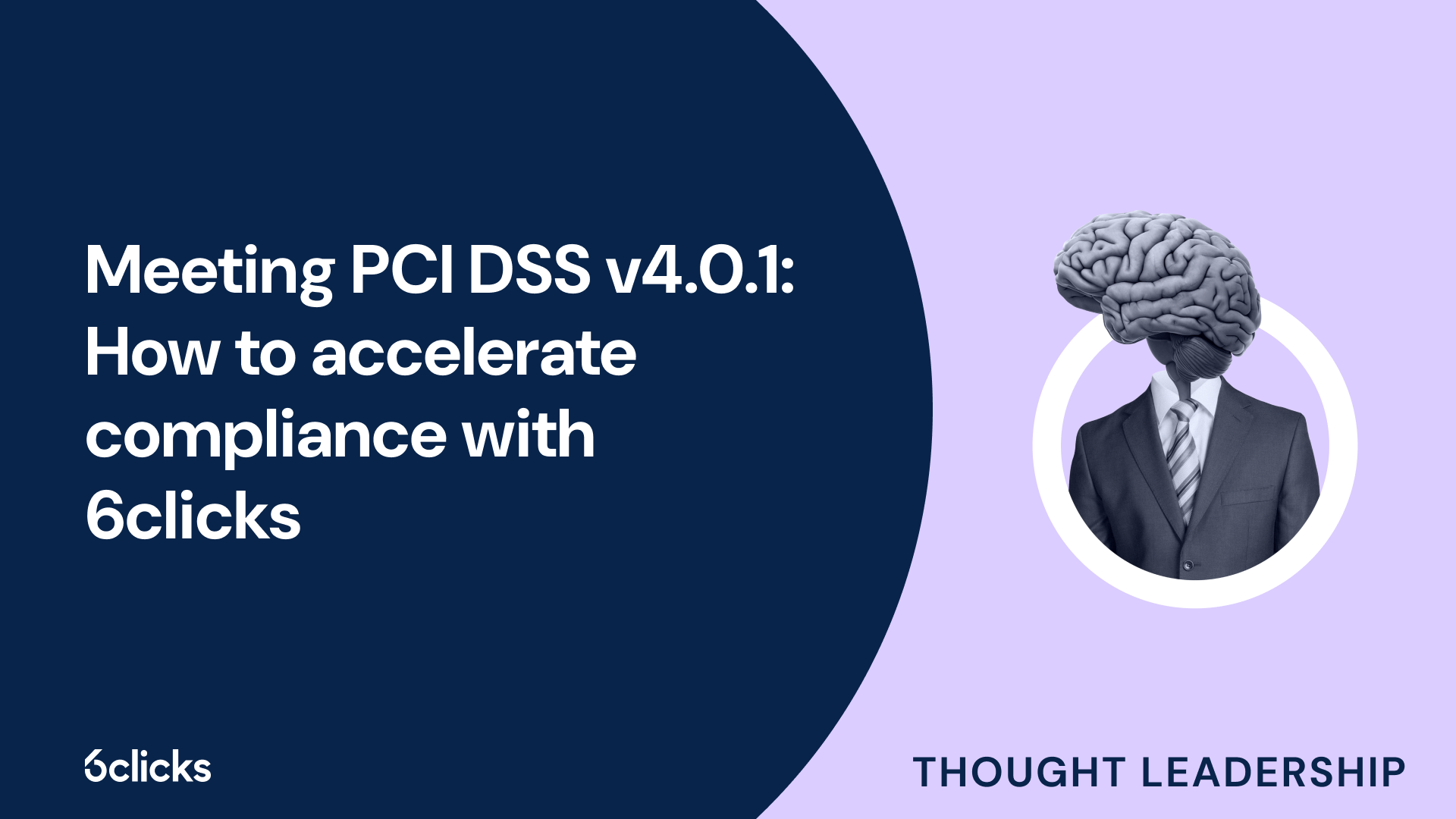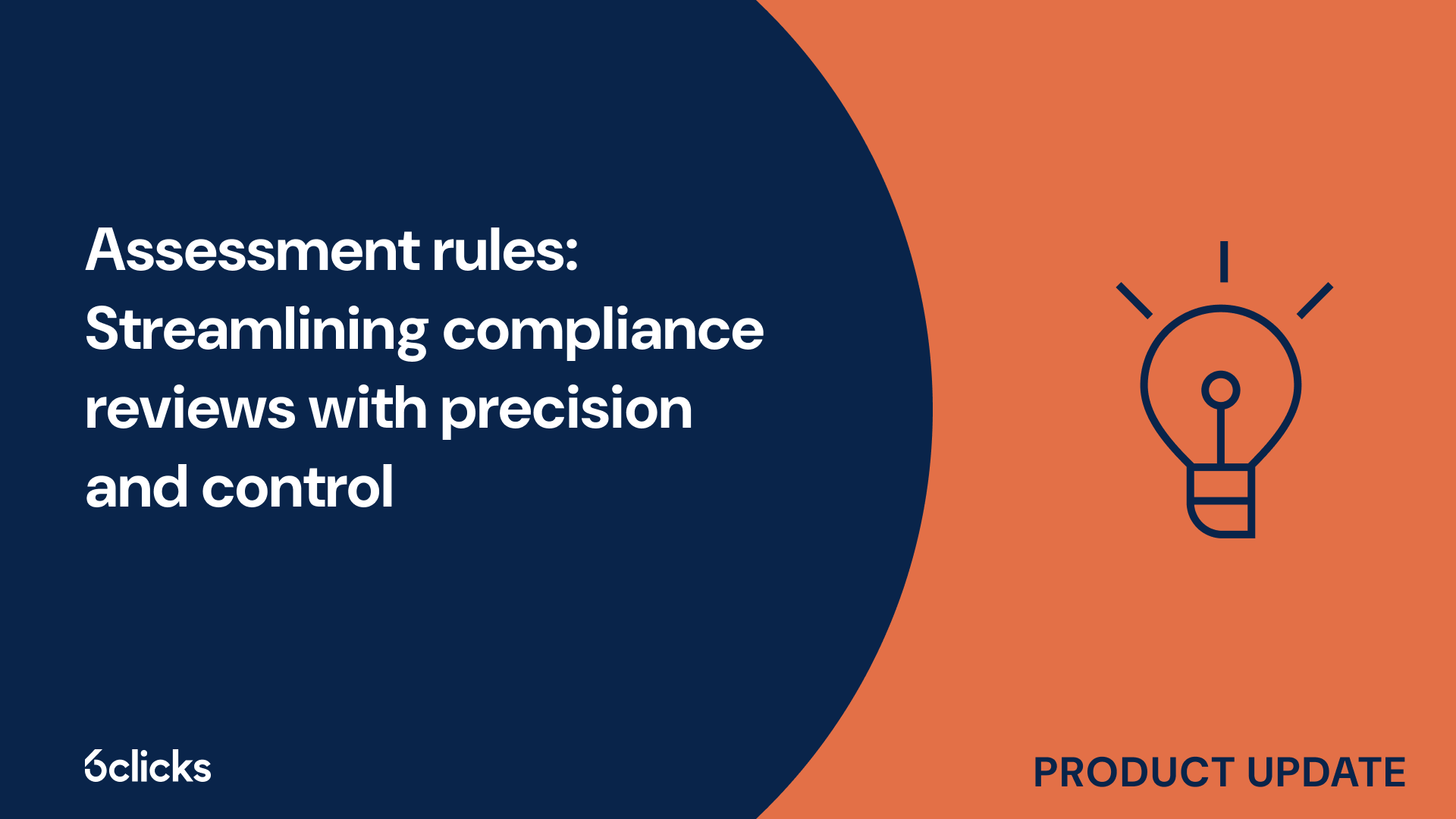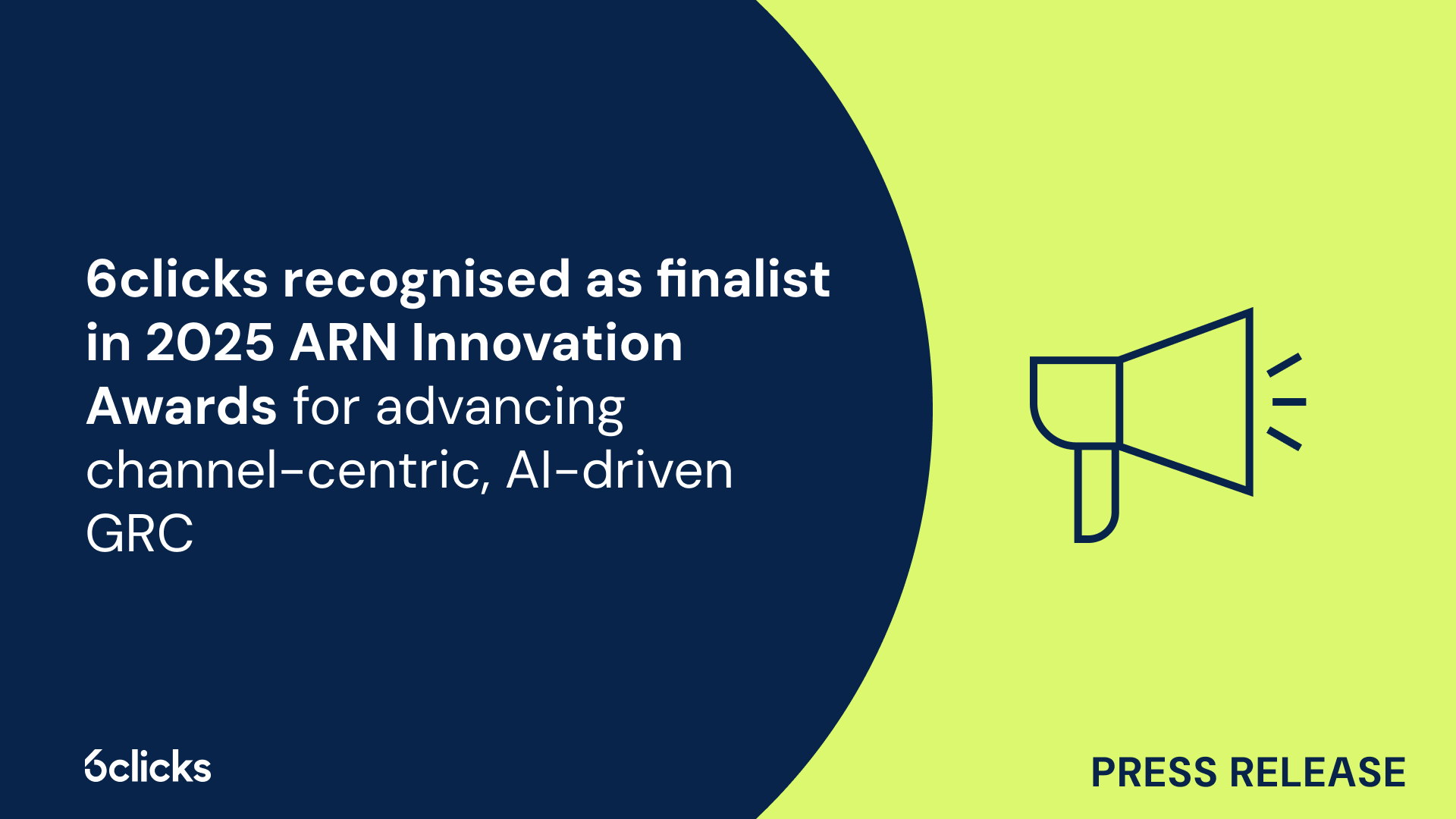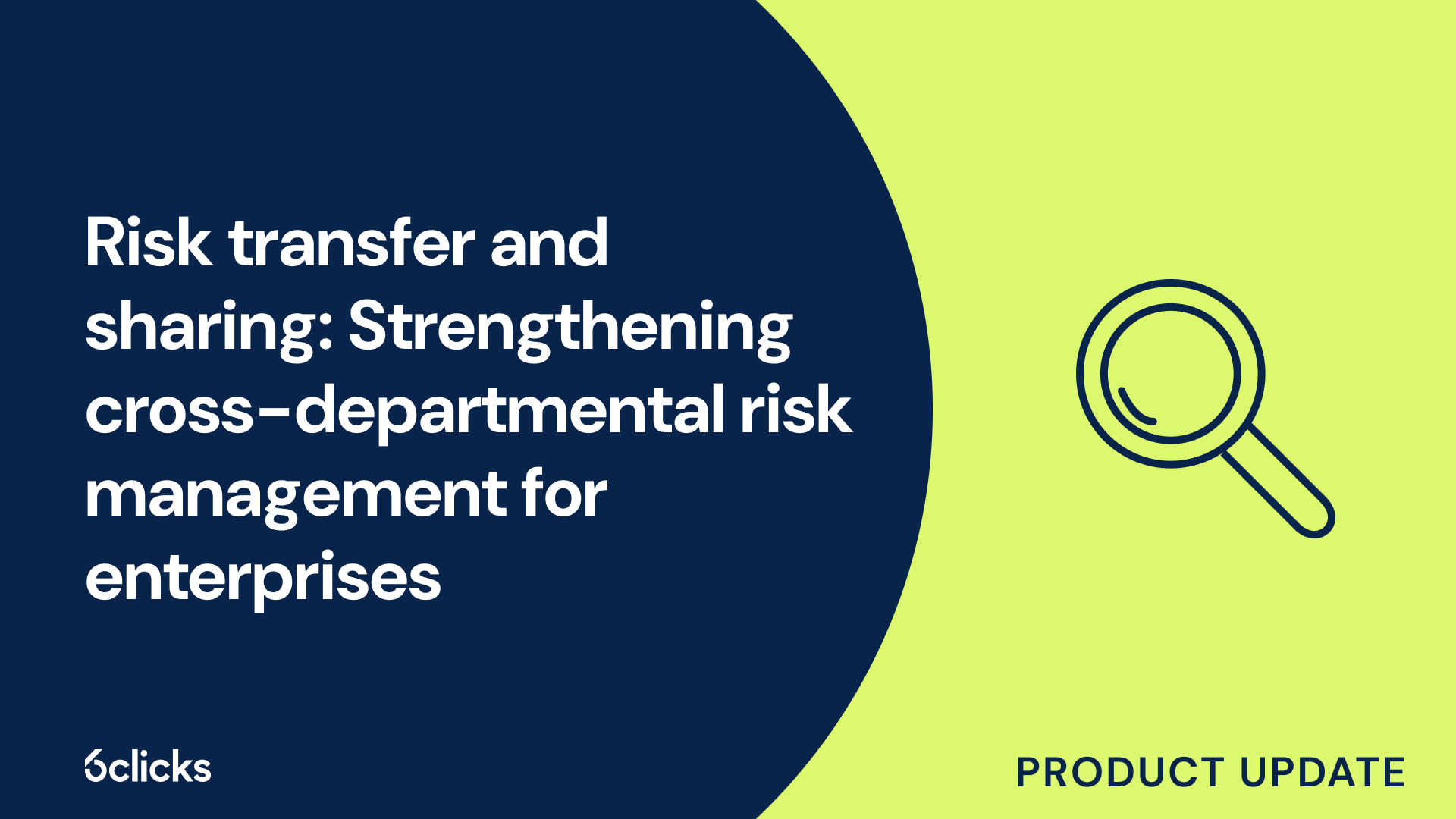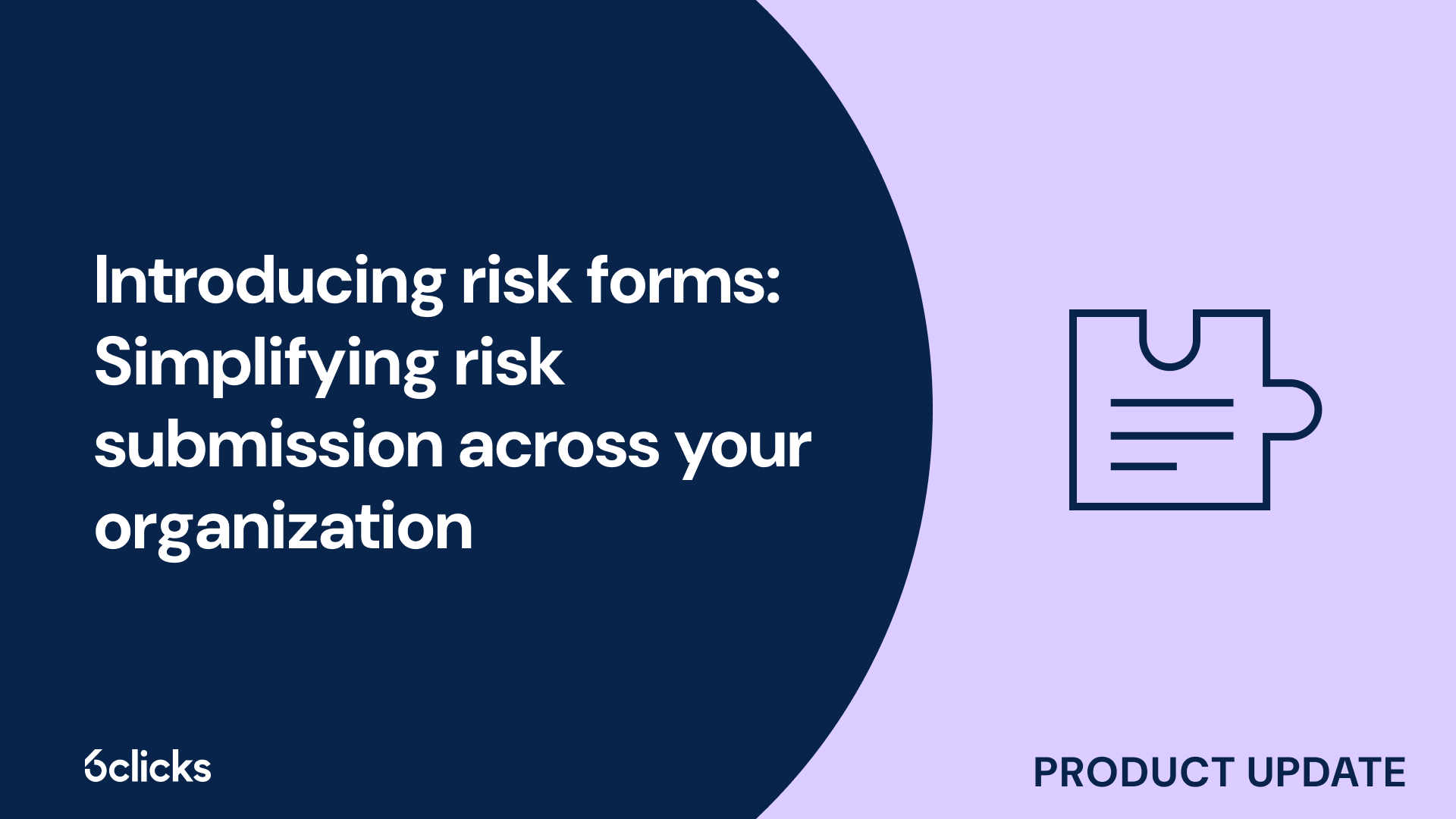The GRC buyer’s guide for 2025: Building resilience with AI-powered, federated solutions
Discover the ultimate GRC buyer's guide for 2025! Uncover how AI-powered, federated solutions transform compliance and security management for industries like government, aerospace, banking, and more. Learn about centralized control, continuous compliance, and advanced cyber GRC capabilities. Download now!
-1.png?width=200&height=249&name=Group%20193%20(1)-1.png)
The GRC buyer’s guide for 2025: Building resilience with AI-powered, federated solutions
What is a threat?
A threat is any potential danger or harm that could negatively impact an individual, organization, or system. In the context of cybersecurity, threats encompass a wide range of risks, including attacks from malicious actors, vulnerabilities in software or systems, and insider threats. Understanding and managing threats is crucial for security teams to protect assets, maintain trust boundaries, and ensure the overall security posture of an organization. Threat modeling is a process that helps identify and assess potential threats and their impact. By analyzing potential risks and vulnerabilities, security professionals can develop effective security measures, protocols, and controls to mitigate these risks and protect critical assets. This article will explore the four basic stages of threat to provide a comprehensive understanding of the threat analysis process and its importance in building a robust security strategy. From identifying potential threats to implementing risk mitigation strategies, these stages form the foundation of effective threat management and contribute to overall security and risk management processes.
What are the 4 basic stages of threat?
Threat modeling is a systematic approach used by security professionals to identify, analyze, and respond to potential threats. The process consists of four distinct stages: identification, analysis, response planning, and monitoring and evaluation.
In the identification stage, security teams gather information about their organization's assets, vulnerabilities, and trust boundaries. This involves conducting a comprehensive risk assessment and creating asset-based threat profiles to understand the potential threats an organization may face.
Next, in the analysis stage, security professionals evaluate the identified threats to determine their potential impact and likelihood. Through the use of various threat modeling techniques, such as attack trees and root cause analysis, the team gains a deeper understanding of the most significant threats and common vulnerabilities that can be exploited.
After analyzing the threats, the response planning stage involves developing security measures and controls to mitigate the identified risks. A risk mitigation strategy is developed, which includes implementing security protocols, conducting code reviews, and managing access rights to reduce potential vulnerabilities and protect critical assets.
The final stage of threat modeling is monitoring and evaluation. This involves ongoing threat monitoring and assessing the effectiveness of the security measures in place. Security professionals continuously assess the threat landscape, adapt security measures accordingly, and respond to any malicious activity or detected vulnerabilities.
By going through these four stages of threat modeling, organizations can proactively identify and mitigate potential risks, enhancing their overall security posture and ensuring they can effectively respond to potential attacks.
Stage 1: identification
In the first stage of the threat modeling process, known as the identification stage, security teams take crucial steps towards understanding the potential threats their organization may face. This stage involves gathering comprehensive information about the organization's assets, vulnerabilities, and trust boundaries. Security professionals conduct a detailed risk assessment and create asset-based threat profiles to gain insights into the potential risks and security requirements. By systematically identifying the various external threats and potential attacks that could compromise the organization's security posture, the team lays the foundation for developing effective security measures and controls. This initial stage sets the stage for the subsequent analysis, response planning, and monitoring stages of threat modeling, ensuring that security professionals are equipped with a clear understanding of the threats to be addressed.
Types of potential threats
There are various types of potential threats that organizations need to be aware of in order to effectively protect their assets and ensure the security of their systems and data. Threat analysis plays a crucial role in this process, as it involves identifying and classifying potential weaknesses that could be exploited by malicious actors.
Threat analysis follows an iterative cycle that includes several stages. It begins with the identification of potential threats, which can encompass a wide range of possibilities such as external threats, insider threats, and technological risks. By examining the security posture and trust boundaries of the organization, security teams can gain an understanding of the potential vulnerabilities that exist.
Next, threat analysis explores attack paths that could be taken by potential attackers. This involves determining the root causes of these vulnerabilities and identifying the necessary mitigation controls that need to be implemented. By analyzing use and abuse cases, security professionals can gain insights into how malicious actors might exploit identified weaknesses.
Threat categorization models like STRIDE (Spoofing, Tampering, Repudiation, Information Disclosure, Denial of Service, Elevation of Privilege) or ASF (Availability, Security, Functionality) are commonly used to help organize and prioritize potential threats. These models provide a framework for classifying threats based on their impact and severity.
Identifying assets and vulnerabilities
Identifying assets and vulnerabilities is a critical step in threat analysis and risk management. By thoroughly understanding the organization's assets at risk, estimating potential financial loss, assessing the level of attractiveness as a target, and evaluating existing defenses against each threat, security professionals can effectively prioritize their security measures. Vulnerability analysis is equally important, as it allows for a thorough investigation of specific vulnerabilities and the design of effective remediation efforts.
To identify assets at risk, security teams should first conduct a comprehensive inventory of all critical assets within the organization. This includes physical assets such as servers, databases, and infrastructure, as well as digital assets like intellectual property, financial data, and customer information.
Once the assets are identified, it is necessary to estimate the potential financial loss associated with the compromise of each asset. This assessment helps prioritize the allocation of security resources and determine the level of investment required for protection.
Assessing the level of attractiveness of each target involves evaluating factors such as industry reputation, competitive advantage, and sensitivity of the asset. This analysis helps determine the likelihood of an attack and the potential impact on the organization.
Next, evaluating existing defenses against each threat is crucial. This involves reviewing the effectiveness of current security controls, protocols, and measures in place to protect the identified assets. It is important to identify any gaps or weaknesses in the security posture and take necessary steps to address them.
In addition to asset identification, conducting vulnerability analysis is essential. This involves thoroughly investigating specific vulnerabilities that exist within the organization and understanding the potential risks associated with each vulnerability. This analysis helps in designing and implementing effective remediation efforts to mitigate the impact of potential threats.
By following these steps of identifying assets at risk, estimating financial loss, assessing the level of attractiveness, evaluating existing defenses, and conducting vulnerability analysis, organizations can effectively identify and prioritize their security concerns, guiding their security strategy and resource allocation decisions.
Gathering intelligence about attackers
Gathering intelligence about attackers plays a crucial role in threat identification and analysis. By understanding the motivations, capabilities, and tactics of potential threat actors, security professionals can proactively assess the organization's vulnerabilities and implement necessary security measures.
Intelligence gathering provides valuable insights into the tactics, techniques, and procedures employed by malicious actors. It helps in identifying potential targets, attack vectors, and exploitation methods that may be used to compromise critical assets. By gathering information about past attacks and studying the techniques used, security teams can better anticipate and mitigate future risks.
Threat intelligence technology, such as AlertMedia's emergency communication and threat intelligence software, enhances the process of gathering intelligence. This technology leverages various data sources to collect and analyze information about emerging threats. It enables security teams to monitor and notify employees about potential risks in real-time, ensuring swift response and mitigation.
Using modern technology for threat monitoring and emergency communication offers several benefits. It allows for the aggregation and cross-referencing of threat data from analysts, social media platforms, and news outlets with employee and asset locations. This enables organizations to provide targeted alerts and notifications to individuals who may be directly affected by a specific threat. Additionally, the ability to integrate real-time threat intelligence with emergency communication systems helps ensure that employees receive timely information and instructions to keep them safe during a crisis.
Stage 2: analysis
Once potential threats have been identified, the next stage is analysis. During this stage, security teams assess the potential risks and vulnerabilities associated with each threat. This involves conducting a thorough risk assessment and threat modeling process to understand the specific attack vectors and potential impacts. By creating operational threat models and asset-based threat profiles, organizations can identify the security requirements and controls necessary to protect their critical assets. Analysis also involves evaluating the existing security posture and trust boundaries to identify any gaps or weaknesses that may be exploited by malicious actors. Through this comprehensive analysis, security professionals can develop a clear understanding of the potential attacks and the level of risk they pose. This analysis then serves as the foundation for developing a robust security strategy and risk mitigation strategy to protect against potential threats.
Conducting risk assessments
Conducting risk assessments is a crucial process for organizations to identify and mitigate potential threats to their security posture. It involves correlating threat intelligence with asset inventories and vulnerability profiles to assess the likelihood and impact of potential attacks.
By conducting risk assessments, security teams can gain a comprehensive understanding of their organization's security requirements and trust boundaries. This allows them to prioritize and allocate resources effectively to address the most significant cyber threats.
Risk assessments can also involve active testing of systems, such as penetration testing, to verify the effectiveness of security controls and measures in place. This proactive approach helps organizations identify potential vulnerabilities and implement a risk mitigation strategy to safeguard critical assets.
By utilizing a threat modeling process, security professionals can create operational threat models and a prioritized list of threats. This helps to identify potential attacker tactics, evaluate potential risks and design appropriate security measures and protocols.
Developing operational threat models
Developing operational threat models involves a systematic process of identifying potential threats, conducting risk assessments, and creating asset-based threat profiles to prioritize security measures and controls. Here are the basic steps involved in this process:
- Identify potential threats: This step involves brainstorming and researching to identify potential sources of threats, both internal (such as insider threats) and external (such as malicious actors). This helps security teams have a comprehensive understanding of the possible dangers to their organization's security.
- Conduct risk assessments: Once potential threats are identified, security teams can conduct risk assessments to evaluate the likelihood and potential impact of these threats. This helps in prioritizing resources and actions to address the most significant risks.
- Create asset-based threat profiles: Asset-based threat profiling involves analyzing the organization's assets and identifying the vulnerabilities and risks associated with each asset. This helps in determining the appropriate security measures and controls needed to protect these assets.
- Prioritize security measures and controls: With a clear understanding of potential threats and their associated risks, security teams can prioritize and allocate resources effectively to address the identified risks. This involves implementing security measures and controls to mitigate the potential impact of threats.
Creating asset-based threat profiles
Creating asset-based threat profiles is a crucial step in the threat modeling process that helps organizations identify and document potential threats, vulnerabilities, risks, and mitigation efforts specific to a system or application. This process plays a vital role in protecting the company's goals and network by providing valuable insights into the security posture and trust boundaries.
To create asset-based threat profiles, security teams must first thoroughly understand the system or application being addressed. This includes identifying all critical assets, such as sensitive customer data or proprietary information, and understanding their functionalities and dependencies.
Once the assets are identified, the next step is to assess potential threats that could compromise their security. This involves brainstorming and researching various types of threats, both external and internal, that could exploit vulnerabilities within the system or application. Common threats include unauthorized access, data breaches, phishing attacks, or denial of service (DoS) attacks.
Following the identification of potential threats, the security team should assess the vulnerabilities associated with each asset. This includes analyzing aspects such as weak access controls, poor encryption practices, or outdated software versions. By understanding vulnerabilities, security teams can implement appropriate security controls and measures to mitigate potential risks effectively.
Finally, creating asset-based threat profiles involves documenting the identified threats, vulnerabilities, and risks associated with each asset. This documentation is essential for maintaining an accurate understanding of the security posture and guiding the implementation of appropriate mitigation efforts. By regularly updating and reviewing these profiles, organizations can proactively identify and address potential weaknesses in their security posture.
Stage 3: response planning
In stage 3, response planning, security teams develop strategies and protocols to effectively respond to potential attacks and mitigate the impact of security breaches. This stage involves identifying the appropriate response procedures, determining the roles and responsibilities of team members, and establishing communication channels and protocols. Response planning also includes the development of a comprehensive incident response plan, which outlines the step-by-step actions to be taken in the event of a security incident. This plan includes strategies for containing and isolating the incident, investigating its root cause, and restoring affected systems and processes. Additionally, response planning often includes training and drills to ensure that security professionals are prepared to effectively respond to various types of threats in a timely and efficient manner. By developing a robust response plan, organizations can minimize the potential damage caused by security incidents, maintain trust boundaries, and protect their critical assets.
Prioritizing security measures and controls
When it comes to prioritizing security measures and controls, the NIST (National Institute of Standards and Technology) approach can be incredibly helpful. This approach assists security teams in assessing the severity of identified threats, allowing them to effectively allocate resources and prioritize their security posture.
To begin the process, a thorough threat analysis should be conducted to identify potential threats and their potential impact on the organization's assets and operations. This analysis helps establish a solid foundation for understanding the security requirements and trust boundaries that need to be protected.
Once the threats have been identified, the NIST approach provides guidelines for quantifying both the likelihood and impact of each threat. This enables security professionals to prioritize threats based on their severity, considering factors such as the potential damage they could cause and the likelihood of their occurrence.
Using the NIST approach, security teams can create operational threat models that list potential attacks and associated risks. This process allows them to construct attack trees, which map out the vulnerabilities and potential vulnerabilities that may be exploited by malicious actors. By analyzing these attack trees, security professionals can determine the most critical assets and potential attacker paths.
With this information, the next step is to develop a risk mitigation strategy. This strategy involves implementing security controls, measures, and protocols to address the identified threats effectively. By prioritizing security measures and controls based on the severity of threats, security teams can allocate their resources efficiently and focus on the most imminent risks.
The NIST approach provides security professionals with a structured and systematic framework for prioritizing security measures and controls. It enables effective threat analysis, risk assessment, and development of a robust security strategy. By utilizing this approach, organizations can enhance their security posture and effectively defend against potential threats.
Establishing trust boundaries and security protocols
Establishing trust boundaries and security protocols is a crucial step in safeguarding an organization's assets and operations. To accomplish this, security teams need to refer to the trust levels and access rights documented in the threat model.
Trust boundaries delineate the areas within an organization's network where different levels of access are required. By defining these boundaries, security professionals can enforce appropriate security measures and controls. This ensures that access is granted only to individuals with the necessary permissions and prevents unauthorized access from external threats.
In the threat model, access rights should be clearly defined for each entry point and asset within the organization's infrastructure. This involves determining the level of access required to interact with each asset and the trust level associated with each entry point. By mapping the access rights to the trust levels, security teams can identify the security protocols required for different areas of the network.
Cross-referencing the trust levels with the entry points and assets allows security professionals to determine the appropriate security measures and controls. For example, highly sensitive assets may require multi-factor authentication, while lower-risk assets may only require basic login credentials. By tailoring security protocols based on the trust levels and access rights, organizations can effectively mitigate potential threats and protect their critical assets.
Developing root node attack trees
Developing root node attack trees is an effective technique used in threat modeling to analyze and assess potential risks and vulnerabilities. Attack trees help security teams understand the steps and conditions that an attacker may take to achieve their primary objective, allowing organizations to develop a robust risk mitigation strategy.
The structure of an attack tree starts with the root node, which represents the attacker's primary objective. This objective could be gaining unauthorized access to a critical asset, initiating a denial of service attack, or any other malicious activity. Each child node linked to the root node represents a condition or step that the attacker must accomplish in order to achieve the primary objective. These child nodes can further branch out into additional nodes, creating a visual representation of the attack path.
Building a root node attack tree involves a thorough understanding of potential threats and attack vectors. Security professionals can identify potential vulnerabilities in their application security, trust boundaries, or security posture and map them out as possible children nodes. This step-by-step analysis allows organizations to prioritize and focus on the most critical assets and vulnerabilities.
Root node attack trees can be combined with other methodologies in threat modeling, such as asset-based threat profiles or the use of operational threat models. This integration provides a holistic view of potential threats, helping organizations develop an effective security strategy.
Stage 4: monitoring and evaluation
Stage 4 of the risk management process is monitoring and evaluation. This stage is crucial as it allows organizations to continuously assess and address potential risks and identify opportunities for improvement. By monitoring risks, organizations can proactively respond to any changes that may impact their security posture or overall performance.
Risks and opportunities should be monitored and reported on regularly and systematically. This ensures that any emerging threats or potential vulnerabilities are promptly identified and addressed. The frequency at which risks and opportunities should be monitored depends on the organization's risk appetite, the nature of the activities being monitored, and the potential impact of the risks. Typically, regular monitoring should be conducted at least quarterly or as determined by the Risk Manager.
Forums for escalation play a key role in the risk monitoring and reporting process. These forums provide a platform for discussing and escalating risks and opportunities to the appropriate stakeholders. They can include regular risk management meetings, project update meetings, or executive-level forums. The Risk Manager and Project Manager are crucial roles involved in monitoring and reporting. The Risk Manager is responsible for overseeing the risk management process, coordinating risk assessments, and ensuring the effectiveness of risk mitigation strategies. The Project Manager, on the other hand, is responsible for monitoring project-specific risks and ensuring they are incorporated into the overall risk management framework.



